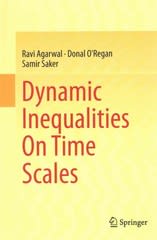Question
The yield Y, in kg, of corn as a function of the nitrogen N and phosphorus P (measured in kg) added by a farmer is
The yield Y, in kg, of corn as a function of the nitrogen N and phosphorus P (measured in kg) added by a farmer is Y(N, P) = KNP-N-P where k is a positive constant. The cost of nitrogen and phosphorus is $1 per kg. Suppose that a farmer spends exactly $1 on nitrogen and phosphorus together per m? of land. (a) Write down the partial derivates of Y (N, P). (b) Write down the constraint function, g(N, P). (Hint: this is the total amount the farmer spends on nitrogen and phosphorus per m2). (c) How much nitrogen and phosphorus should the farmer use per m2? (d) When In(k) = 1, what is the maximum yield of the crop per m? subject to the constraint above?
Step by Step Solution
There are 3 Steps involved in it
Step: 1

Get Instant Access to Expert-Tailored Solutions
See step-by-step solutions with expert insights and AI powered tools for academic success
Step: 2

Step: 3

Ace Your Homework with AI
Get the answers you need in no time with our AI-driven, step-by-step assistance
Get Started


